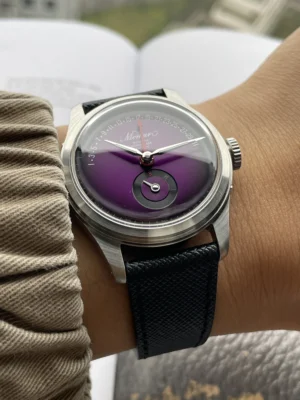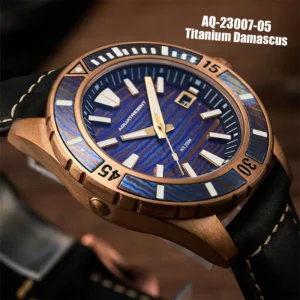1. Understanding Greenwich Mean Time (GMT): The Foundation of Global Timekeeping
Greenwich Mean Time (GMT) refers to the mean solar time at the Royal Observatory in Greenwich, London. This time standard has served as the backbone of global timekeeping for over a century, providing a consistent reference point that connects all timezones across the world.
The concept of GMT emerged from a practical need – as maritime exploration expanded, navigators required a reliable way to determine longitude at sea. The Royal Observatory, established in 1675, became the reference point for this crucial measurement.
The establishment of GMT as a global standard followed this timeline:
– Early 18th century: Development of marine chronometers that could maintain accurate time at sea
– 1884: International Meridian Conference officially established GMT as the global time standard
– Late 19th century: Adoption of the Prime Meridian (0° longitude) passing through Greenwich as the reference line for global time calculation
The Prime Meridian at Greenwich represents the starting point for measuring longitude around the Earth. This invisible line dividing the eastern and western hemispheres serves as the physical manifestation of GMT’s importance in global timekeeping.
Today, visitors to the Royal Observatory can stand on the brass line marking the Prime Meridian, literally straddling the eastern and western hemispheres – a physical representation of GMT’s fundamental role in organizing time globally.
The rich history of dive watch engineering reveals how precise timekeeping standards like GMT became essential for underwater navigation and safety. Similarly, the timeline of diving watch innovations demonstrates how advances in timekeeping directly influenced explorers’ ability to navigate accurately across oceans.
2. GMT vs. UTC: Understanding the Key Differences and Relationship
While many people use GMT and UTC (Coordinated Universal Time) interchangeably, these two time standards have important distinctions worth understanding.
UTC is the primary time standard by which the world regulates clocks and time. Unlike GMT, which is based on mean solar time, UTC is based on International Atomic Time (TAI) – a highly precise standard measured by atomic clocks around the world.
The key differences between these standards can be summarized as follows:
| Feature | GMT | UTC |
|---|---|---|
| Basis | Mean solar time at Greenwich | International Atomic Time (TAI) |
| Accuracy | Astronomical measurement | Atomic precision (nanoseconds) |
| Leap seconds | Not included | Includes leap seconds to align with Earth’s rotation |
| Primary use today | Timezone reference (UTC+0) | Scientific standard, computing, aviation |
| Variations | Can vary slightly with Earth’s irregular rotation | Extremely stable and precise |
Despite these technical differences, in everyday practice, GMT and UTC are effectively equivalent to within one second. This near-equivalence explains why many people continue to use GMT when referring to the timezone at the Prime Meridian, even though UTC has technically replaced it as the international standard.
The distinction becomes particularly relevant in scientific contexts, where the additional precision of UTC matters. For instance, global positioning systems, satellite communications, and computer networks all rely on the exactitude of UTC.
For a deeper explanation of how GMT functions in modern timekeeping systems, exploring the GMT functionality explained resource provides valuable insights into this relationship.
3. The Global Timezone System: Built Around GMT/UTC
The modern global timezone system is fundamentally structured around GMT/UTC as its central reference point. This elegant system divides the world into 24 standard time zones, each theoretically 15° of longitude wide (since the Earth rotates 15° per hour).
In a perfect world, these timezones would follow exact longitudinal lines. However, practical considerations such as national and regional boundaries have created a more complex reality:
- Standard timezones are typically offset from GMT/UTC by whole hours (GMT+1, GMT-5, etc.)
- Many regions use non-standard offsets of half-hours (India: UTC+5:30) or even quarter-hours (Nepal: UTC+5:45)
- Political boundaries often override geographical considerations, creating irregularly shaped timezone boundaries
- Some large countries span multiple timezones (USA: 6 standard zones, Russia: 11 zones)
- Other large countries maintain a single timezone despite spanning geographical zones that would suggest multiple zones (China uses a single timezone despite spanning what would naturally be five zones)
The International Date Line, roughly following the 180° meridian in the Pacific Ocean, marks where the date changes. Crossing this line eastward subtracts a day, while crossing westward adds a day – a necessary accommodation to maintain date consistency around the globe.
For travelers and professionals who frequently work across multiple regions, understanding how multi-timezone watches function provides practical tools for managing these global time differences.
4. How to Calculate Time Across Zones Using GMT/UTC
Converting times between different zones using GMT/UTC as the reference point follows a straightforward mathematical principle: add the timezone’s offset to GMT to find the local time, or subtract the offset from local time to find GMT.
Converting GMT to Local Time:
- Identify the timezone offset for your target location (e.g., New York is GMT-5 in standard time)
- Apply the mathematical operation indicated by the offset:
– For positive offsets: ADD the hours to GMT
– For negative offsets: SUBTRACT the hours from GMT
Example 1: Converting 14:00 GMT to Eastern Standard Time (EST/GMT-5)
– 14:00 – 5 hours = 09:00 EST
Converting Local Time to GMT:
- Identify your local timezone offset from GMT
- Apply the reverse mathematical operation:
– For positive offsets: SUBTRACT the hours from local time
– For negative offsets: ADD the hours to local time
Example 2: Converting 20:00 Central European Time (CET/GMT+1) to GMT
– 20:00 – 1 hour = 19:00 GMT
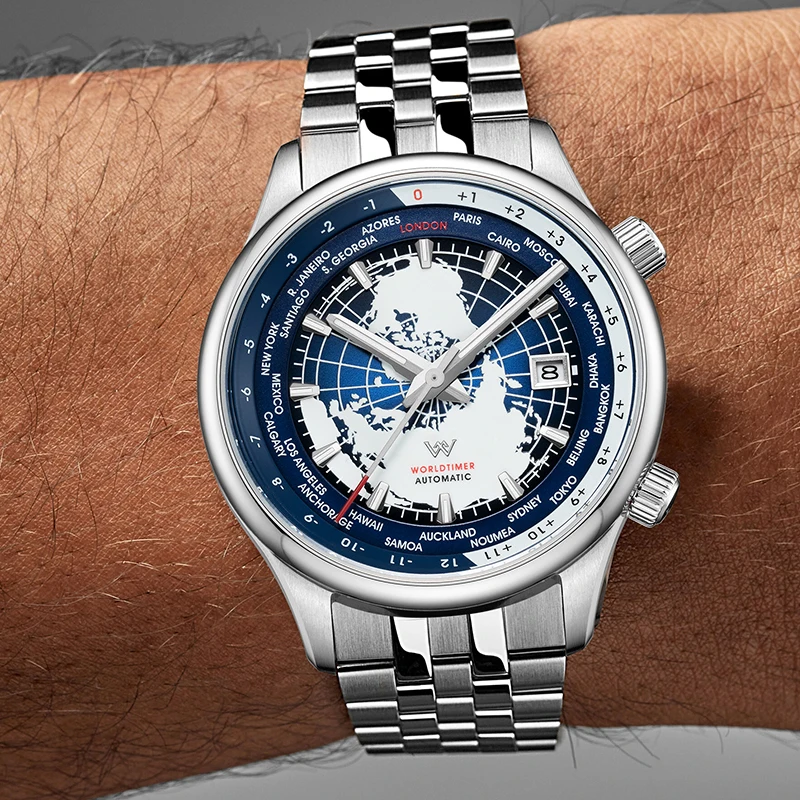
Example 3: Converting between non-GMT timezones (Tokyo UTC+9 to Los Angeles UTC-8)
1. Convert Tokyo time to GMT: 15:00 Tokyo – 9 hours = 06:00 GMT
2. Convert GMT to Los Angeles: 06:00 GMT – 8 hours = 22:00 Los Angeles (previous day)
When calculations cross midnight, remember to adjust the date accordingly. This is particularly important when scheduling international calls or meetings.
The evolution of dive watch technology has been significantly influenced by the need to track time across multiple zones, particularly for professional divers working internationally.
5. Daylight Saving Time: How It Affects GMT Relationships
One of the most confusing aspects of global time calculations involves Daylight Saving Time (DST). While GMT/UTC remains constant throughout the year, many regions shift their relationship to this standard by adjusting their clocks forward by one hour during summer months.
This creates a critical distinction: while a location’s offset from GMT/UTC is fixed in theory, the practical offset changes during DST periods. For example:
- New York normally operates on Eastern Standard Time (EST/GMT-5)
- During DST, New York shifts to Eastern Daylight Time (EDT/GMT-4)
- The actual difference between New York and GMT changes by one hour, though GMT itself hasn’t changed
This pattern repeats globally but with different implementation schedules:
| Region | Standard Time | DST Name | DST Offset Change |
|---|---|---|---|
| UK | GMT (UTC+0) | BST | UTC+1 |
| US East Coast | EST (UTC-5) | EDT | UTC-4 |
| Central Europe | CET (UTC+1) | CEST | UTC+2 |
| Australia (Sydney) | AEST (UTC+10) | AEDT | UTC+11 |
Further complicating matters is the fact that:
– Northern and Southern Hemisphere countries observe DST during opposite seasons
– Many tropical and equatorial countries don’t observe DST at all
– DST start/end dates vary between countries and regions
– Some regions within countries may opt out of DST even when the rest of the country observes it
When making time calculations during transition periods, always verify whether DST is currently in effect for each location involved. Our GMT automatic watches are designed to help travelers manage these seasonal time changes with precision.
6. Global Applications: Why GMT/UTC Matters in Various Industries
GMT/UTC serves as the backbone for time synchronization across numerous global industries and activities:
Aviation
Pilots and air traffic controllers worldwide use “Zulu time” (another name for UTC) regardless of their physical location. This prevents confusion when aircraft cross multiple timezones during a single flight. Flight plans, weather reports, and communications all reference this standard to ensure global consistency.
International Business
Companies operating across multiple continents rely on GMT/UTC to coordinate activities. When scheduling a meeting with participants in Tokyo, London, and New York, using GMT as the reference point eliminates confusion about which timezone’s “9 AM” is being referenced.
Financial Markets
Global trading platforms timestamp transactions in UTC to create an unambiguous record of when trades occur, particularly important given the 24-hour nature of certain markets. This prevents disputes about transaction timing and ensures regulatory compliance.
Telecommunications and Internet
Network protocols synchronize using UTC to maintain consistent timestamps across global infrastructure. This synchronization ensures proper sequence of data packets, accurate logging, and coordinated system operations regardless of where servers are physically located.
Scientific Research
Researchers collecting data from multiple locations use GMT/UTC to ensure observations are properly synchronized. This is particularly crucial for astronomical observations, climate monitoring, and experiments requiring precise timing correlation.
Maritime Operations
Ships still use GMT for navigation calculations and logistics, continuing the tradition that originally spurred GMT’s development. This standardized approach simplifies communication between vessels and shore facilities worldwide.
Precision Horology
Premium mechanical watches are often regulated and tested with reference to GMT standards. The vital role of universal time in aviation has particularly influenced the development of specialized timepieces for pilots and frequent travelers.
For professionals requiring reliable timing across multiple zones, our collection of GMT dive watches offers specialized tools built around these principles.
7. GMT in Precision Watchmaking: Displaying Multiple Timezones
Modern precision timepieces have evolved sophisticated mechanisms to track multiple timezones simultaneously, with GMT functionality being one of the most practical and sought-after complications in luxury watches.
GMT watches typically feature an additional hour hand that completes one rotation every 24 hours (rather than the standard 12-hour rotation). This hand points to a 24-hour scale, allowing the wearer to track a second timezone without confusion between AM and PM.
Two main approaches exist in GMT watch design:
- “True GMT” watches: Allow independent adjustment of the standard hour hand while the GMT hand maintains the reference time, ideal for travelers adjusting to local time while tracking home time
- “Caller GMT” watches: Keep the standard hands synchronized while allowing independent adjustment of the GMT hand, better suited for those who stay in their home timezone but need to track time elsewhere
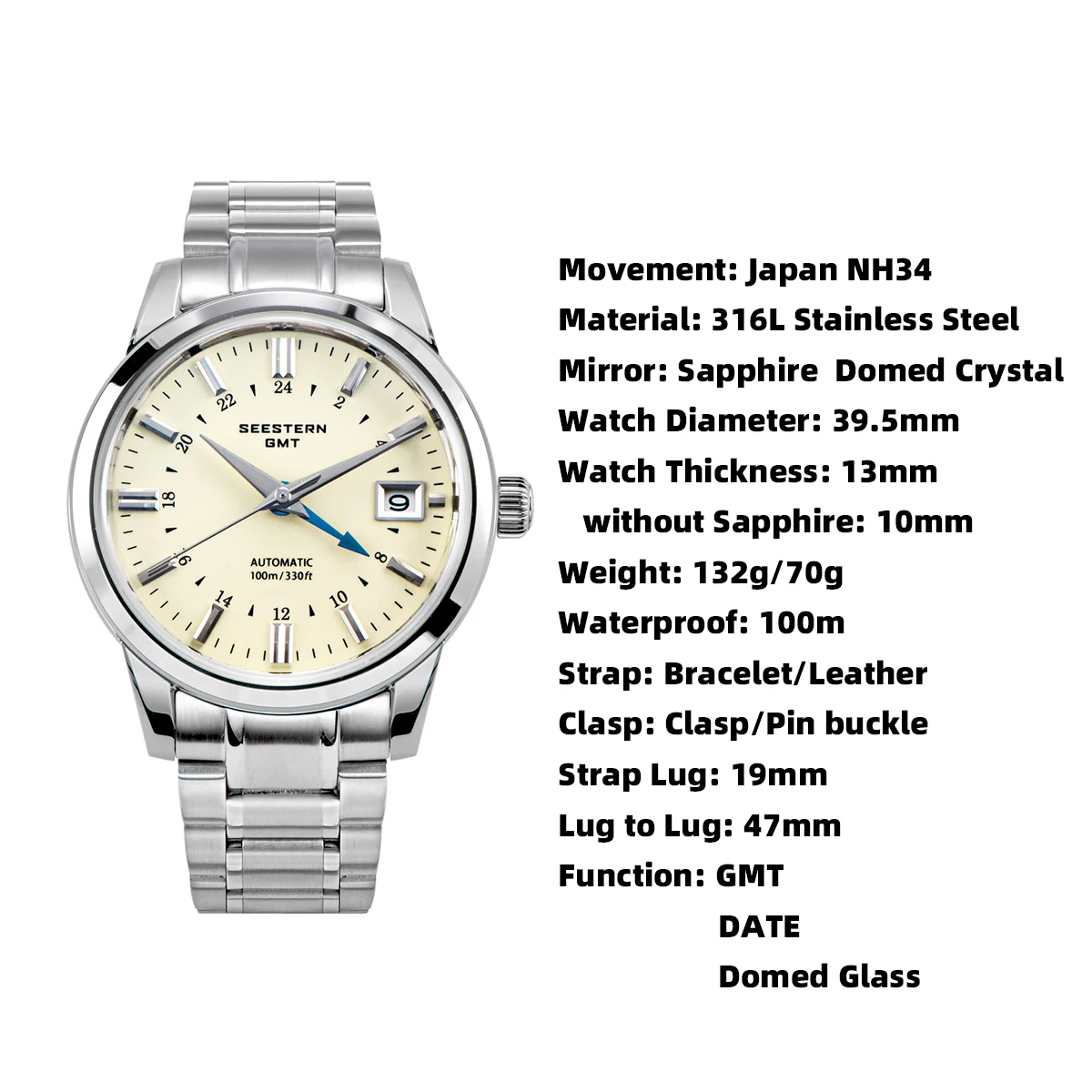
Many GMT watches incorporate rotating 24-hour bezels that add functionality by allowing tracking of a third timezone. By rotating the bezel to align with the GMT hand, the wearer can read off this third reference from the bezel markings.
World timer watches take this concept even further, displaying all major global timezones simultaneously via rotating city discs or rings that correspond to a 24-hour scale. These sophisticated complications provide at-a-glance access to time anywhere in the world.
The history of GMT watches is deeply connected to aviation, with the first models developed specifically for pilots navigating across multiple timezones. Understanding how GMT watches track multiple time zones provides insight into these ingenious mechanical solutions.
Classic Automatic Dress Watches, Day Date Automatic Watches, Perpetual Calendar Automatic Watches
Price range: $540.60 through $574.60 Select options This product has multiple variants. The options may be chosen on the product pageAutomatic Chronograph Watches, Chronograph Pilot Watches
Price range: $233.36 through $237.58 Select options This product has multiple variants. The options may be chosen on the product pageClassic Automatic Dress Watches, GMT Automatic Watches, GMT Pilot Watches
Price range: $1,240.86 through $1,463.33 Select options This product has multiple variants. The options may be chosen on the product pageAutomatic Chronograph Watches, Classic Style Dive Watches
$3,053.06 Select options This product has multiple variants. The options may be chosen on the product pageAutomatic Skeleton Watches, Open Heart Automatic Watches
$98.36 Select options This product has multiple variants. The options may be chosen on the product pageBronze Automatic Watches, Military Inspired Automatic Watches, Professional Spec Dive Watches
Price range: $1,442.21 through $1,442.82 Select options This product has multiple variants. The options may be chosen on the product page
Professionals who frequently cross timezones often favor specialized timepieces like our GMT pilot watches, which combine legibility with multi-timezone functionality.
8. Digital Tools for GMT/UTC Conversions in the Modern World
While mechanical GMT watches offer elegant solutions for timezone tracking, modern digital tools provide complementary options for managing global time differences:
- Online timezone converters allow instant calculation between any two locations, automatically accounting for DST changes
- World clock applications display multiple timezone clocks simultaneously, often with visual maps showing day/night around the globe
- Calendar applications with timezone support can schedule events in multiple locations while showing local times for all participants
- Operating system time settings automatically adjust to location changes when traveling
- Time API services help developers build timezone awareness into websites and applications
- Specialized business tools facilitate global team coordination across distributed locations
These digital solutions excel at handling complex timezone calculations, particularly when dealing with unusual offsets or frequent DST transitions. They can automatically update for DST changes and policy updates, removing the burden of manual tracking.
For global professionals, combining the reliability of a mechanical automatic watch with digital timezone tools provides both traditional craftsmanship and modern convenience.
9. Common Misconceptions About GMT and Timezones
Several persistent myths about GMT and global timezones create confusion for travelers and international professionals:
Myth: “GMT is always the current time in London.”
Fact: During summer months, the UK switches to British Summer Time (BST), which is GMT+1. GMT remains the standard reference, unchanged by seasonal adjustments.
Myth: “GMT and UTC are exactly the same thing.”
Fact: While functionally similar for most purposes, UTC is based on atomic time with leap seconds added to match Earth’s rotation, while GMT is technically based on mean solar time at Greenwich.
Myth: “All timezone offsets are in whole hours.”
Fact: Many regions use half-hour offsets (India: UTC+5:30, Afghanistan: UTC+4:30) or even quarter-hour offsets (Nepal: UTC+5:45).
Myth: “A country always has one unified timezone.”
Fact: Large countries often span multiple timezones. The United States has six standard timezones, Russia has eleven, and Australia has three.
Myth: “GMT changes during Daylight Saving Time.”
Fact: GMT remains constant throughout the year. Local timezones change their relationship to GMT when they implement DST.
Myth: “The International Date Line is exactly 12 hours from GMT.”
Fact: While theoretically centered at UTC+12/-12, the International Date Line zigzags to accommodate political boundaries and includes regions at UTC+13 and even UTC+14.
Myth: “UTC offsets only range from -12 to +12 hours.”
Fact: Kiribati’s Line Islands use UTC+14, the furthest positive offset currently in use.
For those interested in how these principles apply to specialized timepieces, our guide to understanding GMT on dive watches addresses common misconceptions about how these functions operate in practice.
10. Is GMT Still Relevant in the Age of Atomic Clocks?
Despite the development of incredibly precise atomic timekeeping standards, GMT retains both practical and cultural relevance in our modern world. While UTC has technically superseded GMT as the scientific standard, the concept of Greenwich as the prime reference for global time continues to resonate.
GMT maintains relevance through:
- Historical continuity: The concept of Greenwich as the prime meridian is embedded in centuries of navigation, exploration, and scientific development
- Practical accessibility: Unlike atomic time’s technical complexity, the concept of mean solar time at a specific location remains intuitively understandable
- Cultural significance: Greenwich’s role as the “center of time” has profound symbolic meaning in our understanding of global connectedness
- Specialized industries: Aviation, maritime navigation, and certain military operations continue to reference “Zulu time” (UTC/GMT)
- Horological tradition: Mechanical timepieces, particularly those with GMT complications, honor this heritage while providing practical functionality
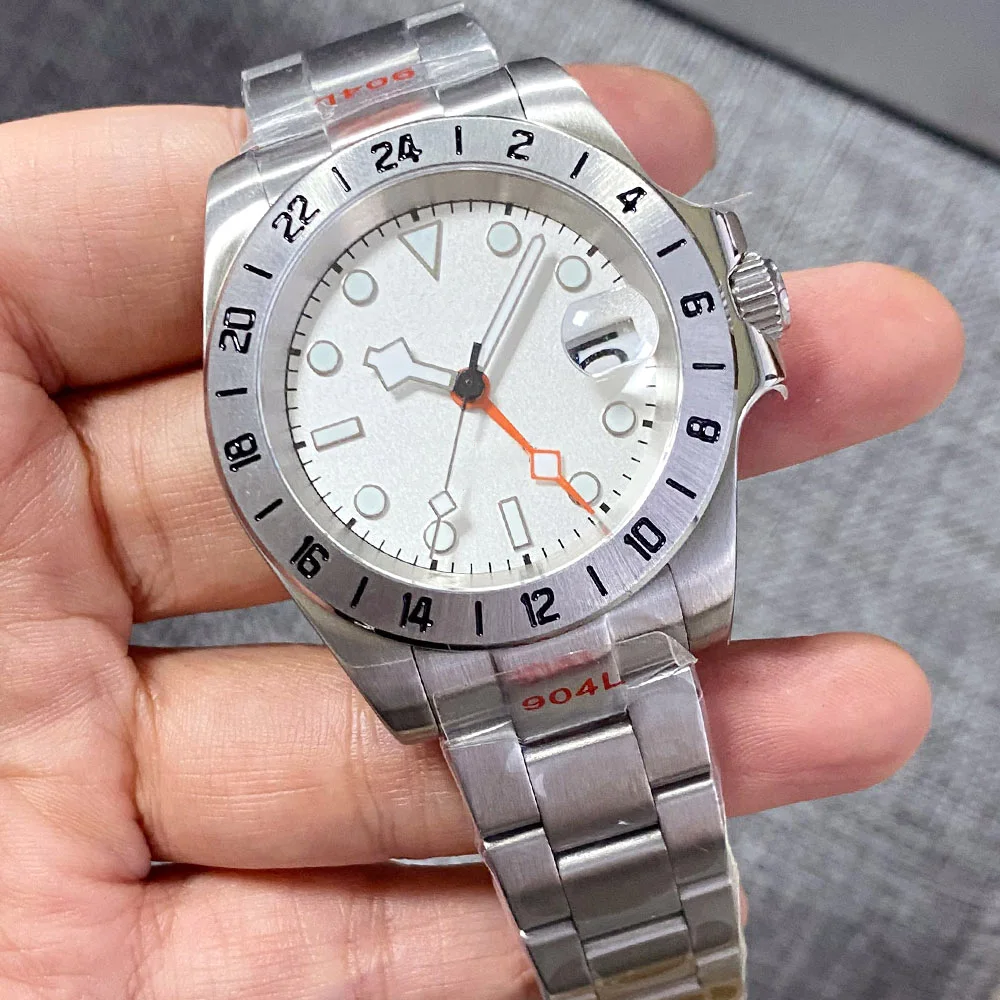
The enduring appeal of mechanical watches with GMT functionality speaks to our desire to connect with traditional methods of understanding time while embracing their practical benefits. The precision mechanisms in professional-spec dive watches carry forward this legacy, combining heritage with functionality for today’s global travelers.
As we navigate an increasingly interconnected world, the foundational role of GMT in organizing global time remains as relevant as ever – a testament to the elegant simplicity of using a single reference point to coordinate time across our planet.


